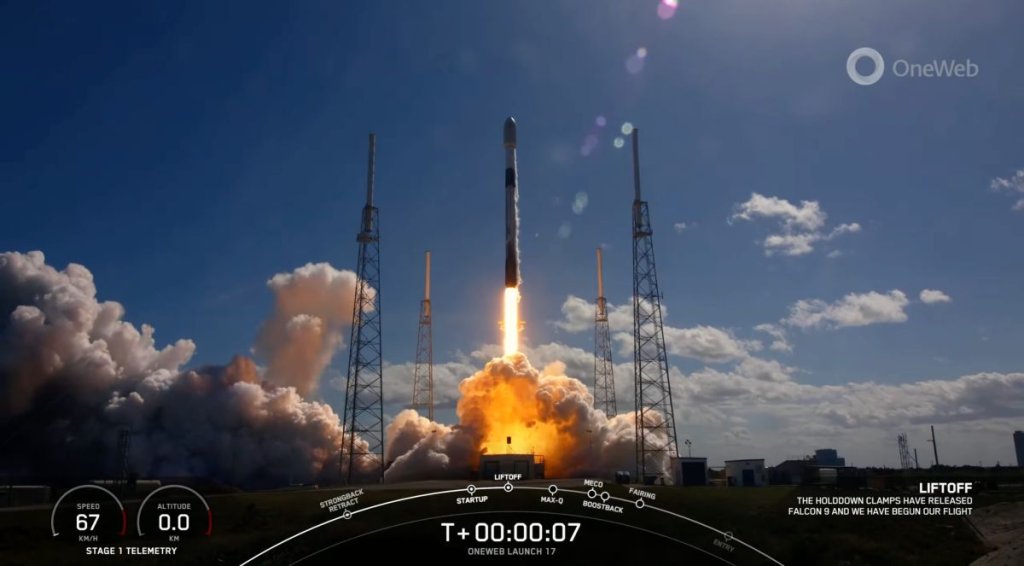A SpaceX Falcon 9 rocket launched 40 broadband satellites to orbit for the U.K. company OneWeb on Thursday (March 9) and came back to Earth for a pinpoint touchdown.
The two-stage Falcon 9 lifted off from Cape Canaveral Space Force Station in Florida Thursday at 2:13 p.m. EST (1913 GMT).
The rocket’s first stage came back to Earth right on schedule, touching down on a landing pad at Cape Canaveral about 7 minutes and 50 seconds after launch.
Related: 8 ways that SpaceX has transformed spaceflight
It was the 13th launch and landing for this particular booster, according to a SpaceX mission description (opens in new tab). Among those previous flights were SpaceX’s two private astronaut missions, Inspiration4 and Ax-1, which launched in September 2021 and April 2022, respectively.
The rocket’s upper stage, meanwhile, continued making its way to low Earth orbit (LEO). The OneWeb satellites were deployed in small batches beginning about 59 minutes after liftoff. All 40 had been successfully deployed by T+96 minutes.
OneWeb is building a constellation of more than 600 satellites in LEO, which will provide internet service to customers around the world.
Thursday’s mission, known as OneWeb 17, brings the number of satellites in this network to 582, company representatives said in a mission description (opens in new tab). Just one more launch, of another 40 satellites, will finish the constellation’s construction, they added.
Most of OneWeb’s satellites have launched atop Russian-built Soyuz rockets operated by the French company Arianespace. But Russia’s invasion of Ukraine last year ended that arrangement, and OneWeb had to find other rides to orbit.
The company did so in short order, inking deals with SpaceX and NewSpace India Limited (NSIL), the Indian Space Research Organisation’s commercial branch. OneWeb has now flown three times with SpaceX (on Falcon 9 rockets) and once with NSIL (on an Indian GSLV Mark III vehicle).
The SpaceX launch contract is interesting, given that Elon Musk’s company is building its own broadband megaconstellation in LEO. SpaceX’s network, called Starlink, consists of more than 3,700 operational spacecraft and continues to grow.
Editor’s note: This story was updated at 2:30 p.m. ET on March 9 with news of successful launch and rocket landing, then again at 4 p.m. ET with news of satellite deployment.
Mike Wall is the author of “Out There (opens in new tab)” (Grand Central Publishing, 2018; illustrated by Karl Tate), a book about the search for alien life. Follow him on Twitter @michaeldwall (opens in new tab). Follow us on Twitter @Spacedotcom (opens in new tab) or on Facebook (opens in new tab).

